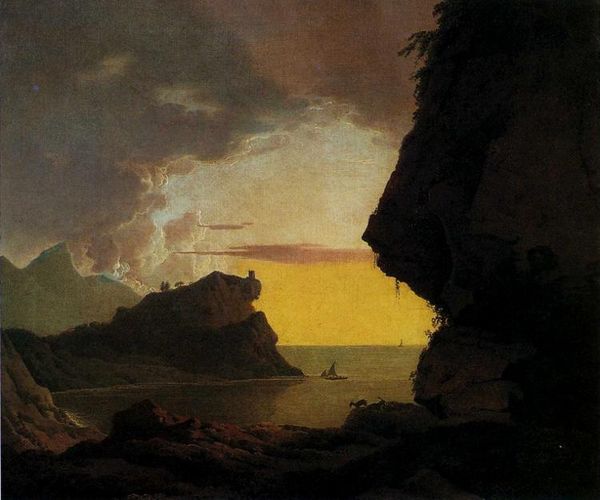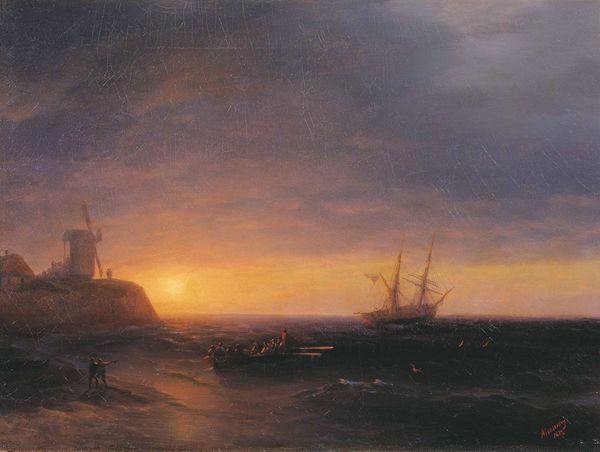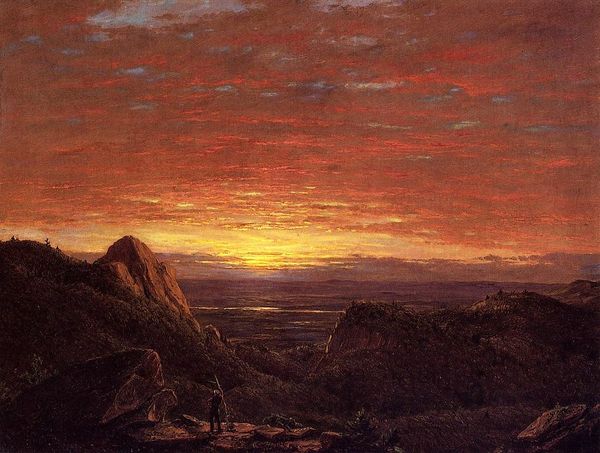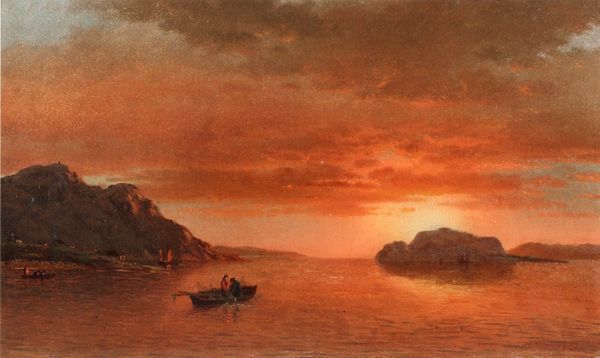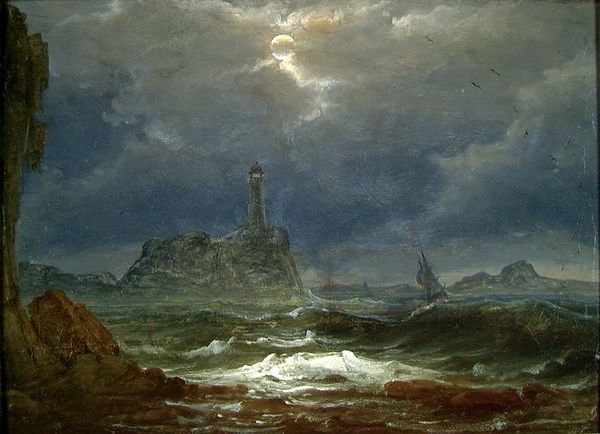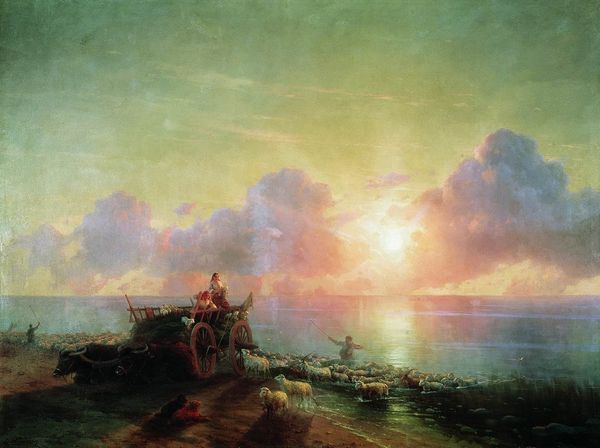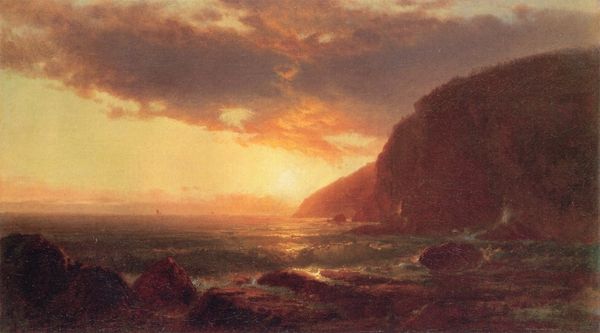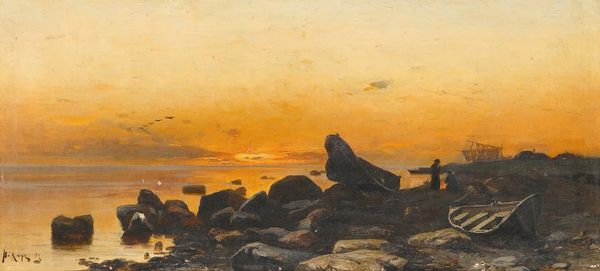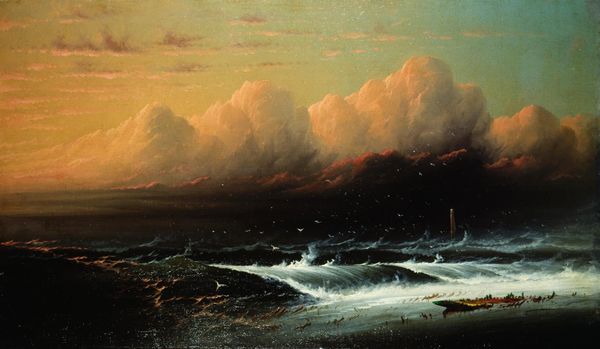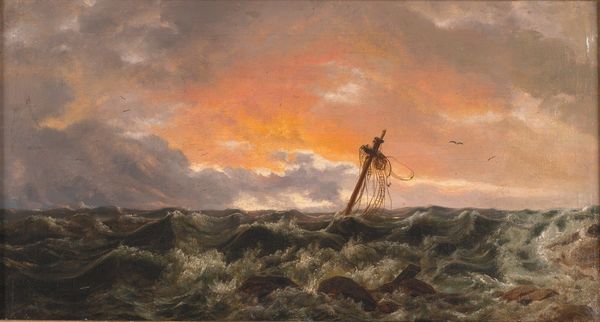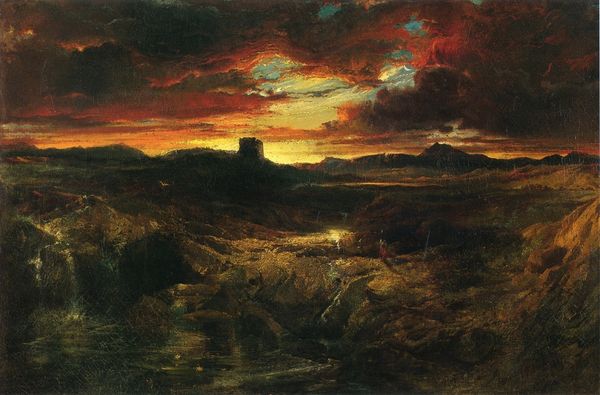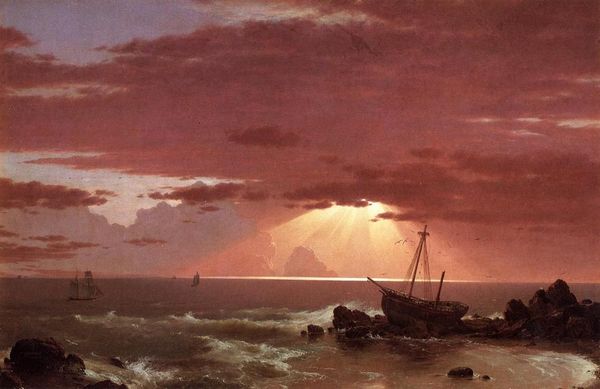
Copyright: Public domain
Editor: This is Frederic Edwin Church’s “Faro, Mount Desert Island,” painted in 1851 with oil paints. It’s quite dramatic, that sky, almost overwhelming the small, blocky structure in the sea. What can you tell me about this painting? Curator: It’s fascinating to consider the physical production here. The pigments themselves would have been meticulously ground, mixed with oil, each hue a result of specific mineral sourcing and chemical processes. Notice how Church uses that to depict both the sublime power of nature and the humble materiality of human intervention. Editor: You mean that simple stone tower? How does that fit in? Curator: Exactly. It's a navigation marker, a practical tool made from quarried stone, shaped and placed by human labor. Juxtapose that with the fiery, seemingly limitless expanse of the sunset. The painting speaks to the relationship between human action and the natural world. What was the context of making those structures? Who labored on their construction, and at what cost? Editor: So you’re saying it’s not just about pretty colors, but about understanding the economic and social realities that made even this seascape possible? Curator: Precisely! Consider the transportation of materials, the organization of labor. And, furthermore, what were Church’s motivations? The burgeoning tourism industry? The scientific drive to categorize and depict the American landscape? It all feeds into the work itself. Editor: I never thought about it that way, focusing so much on how it was made rather than just what it looks like. It makes me wonder about the stories behind those raw materials, where they came from, and who was involved in making this art piece. Curator: Exactly. Understanding the materiality adds another crucial dimension.
Comments
No comments
Be the first to comment and join the conversation on the ultimate creative platform.
